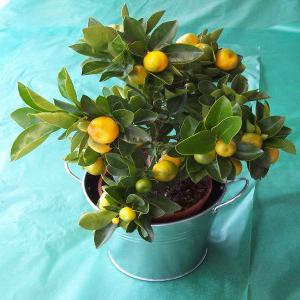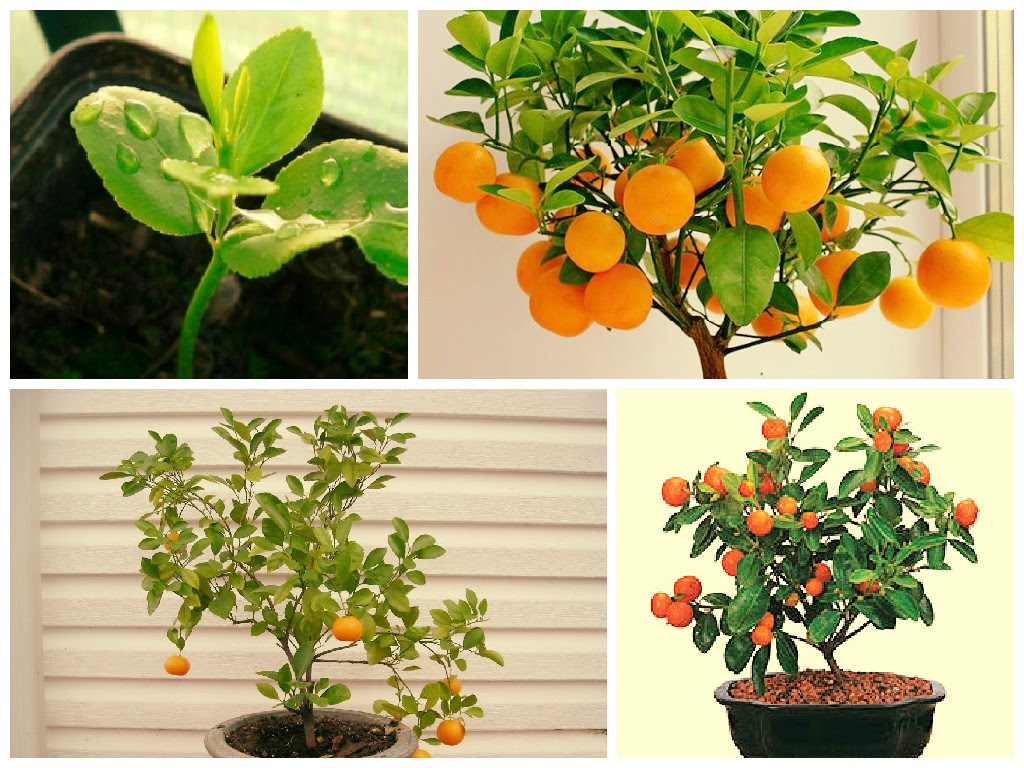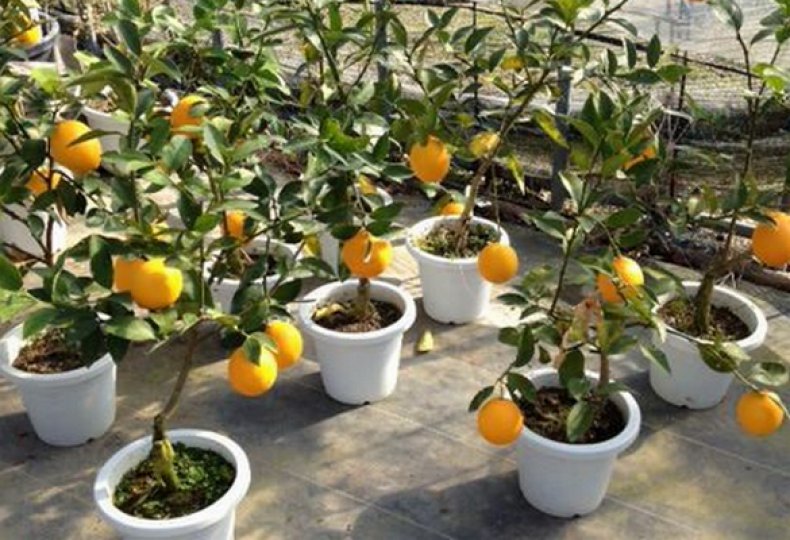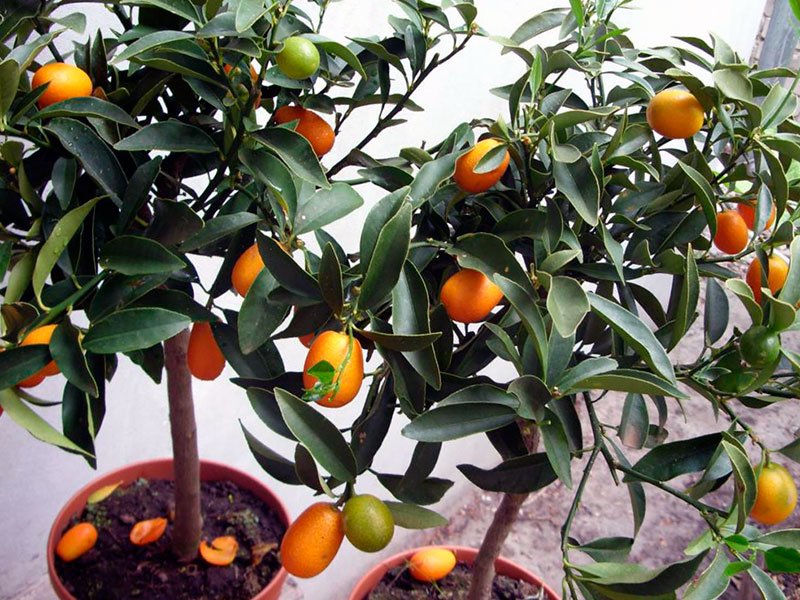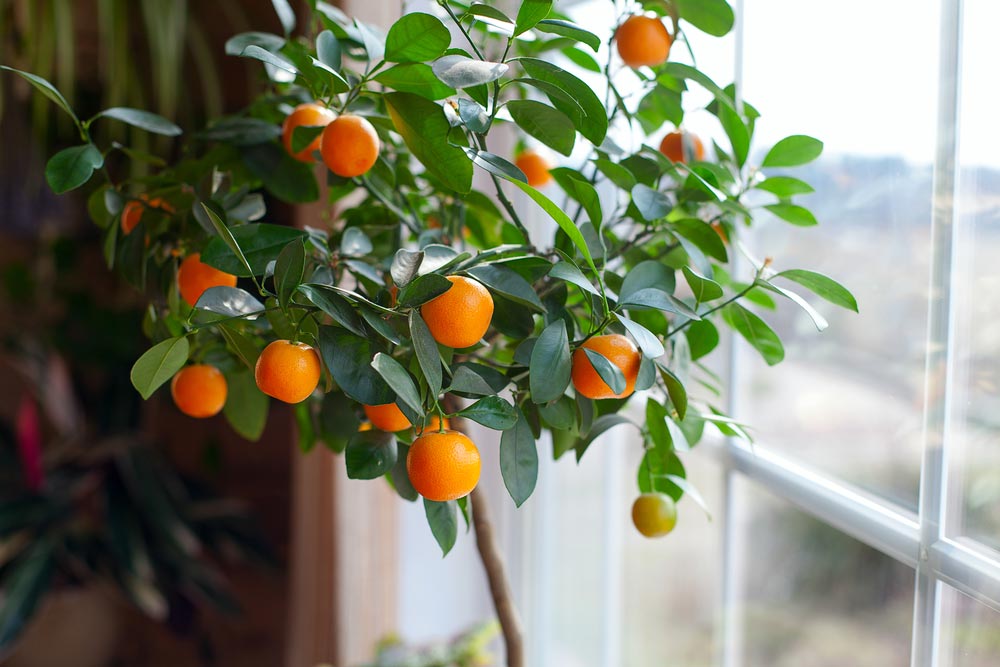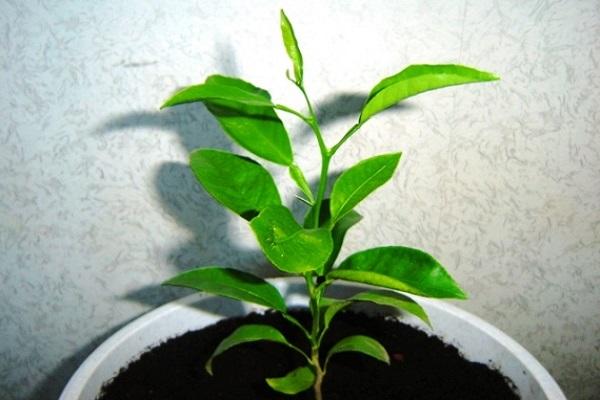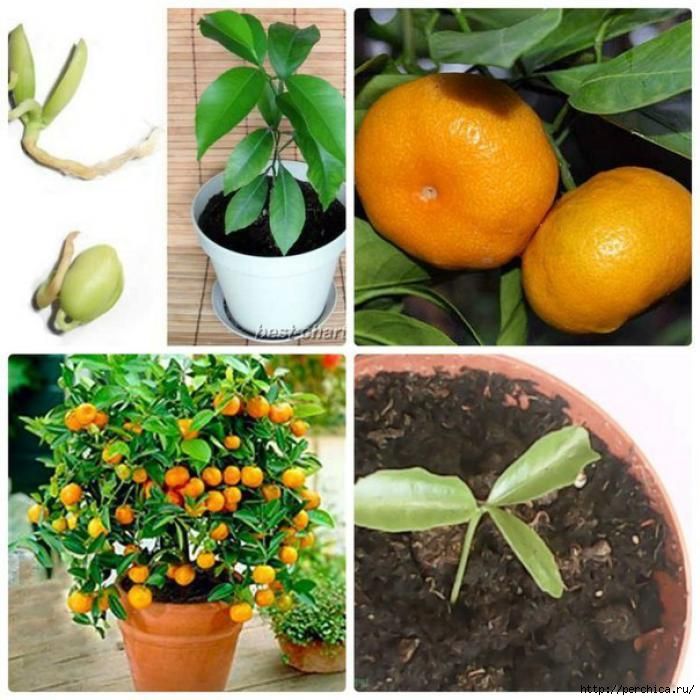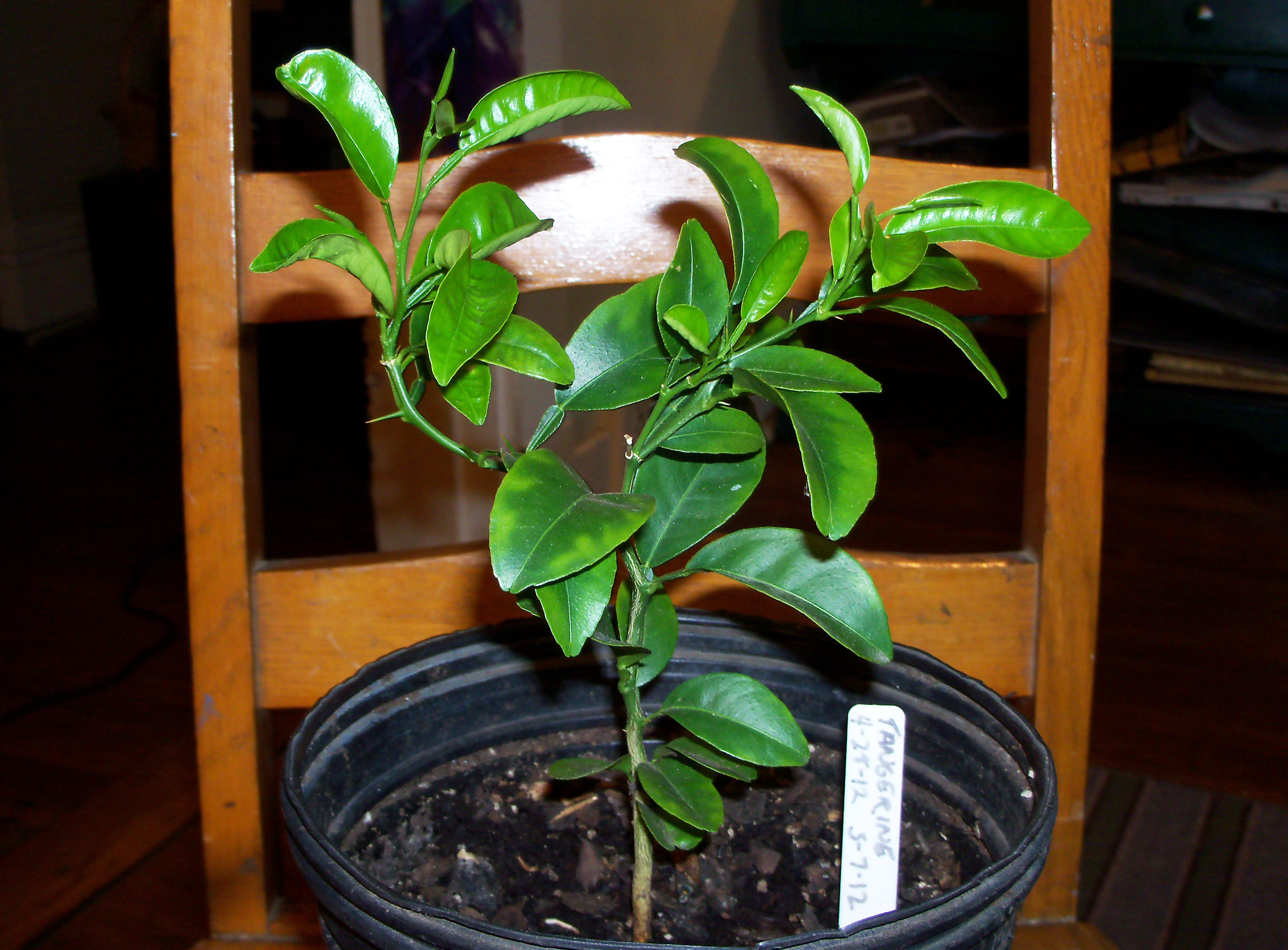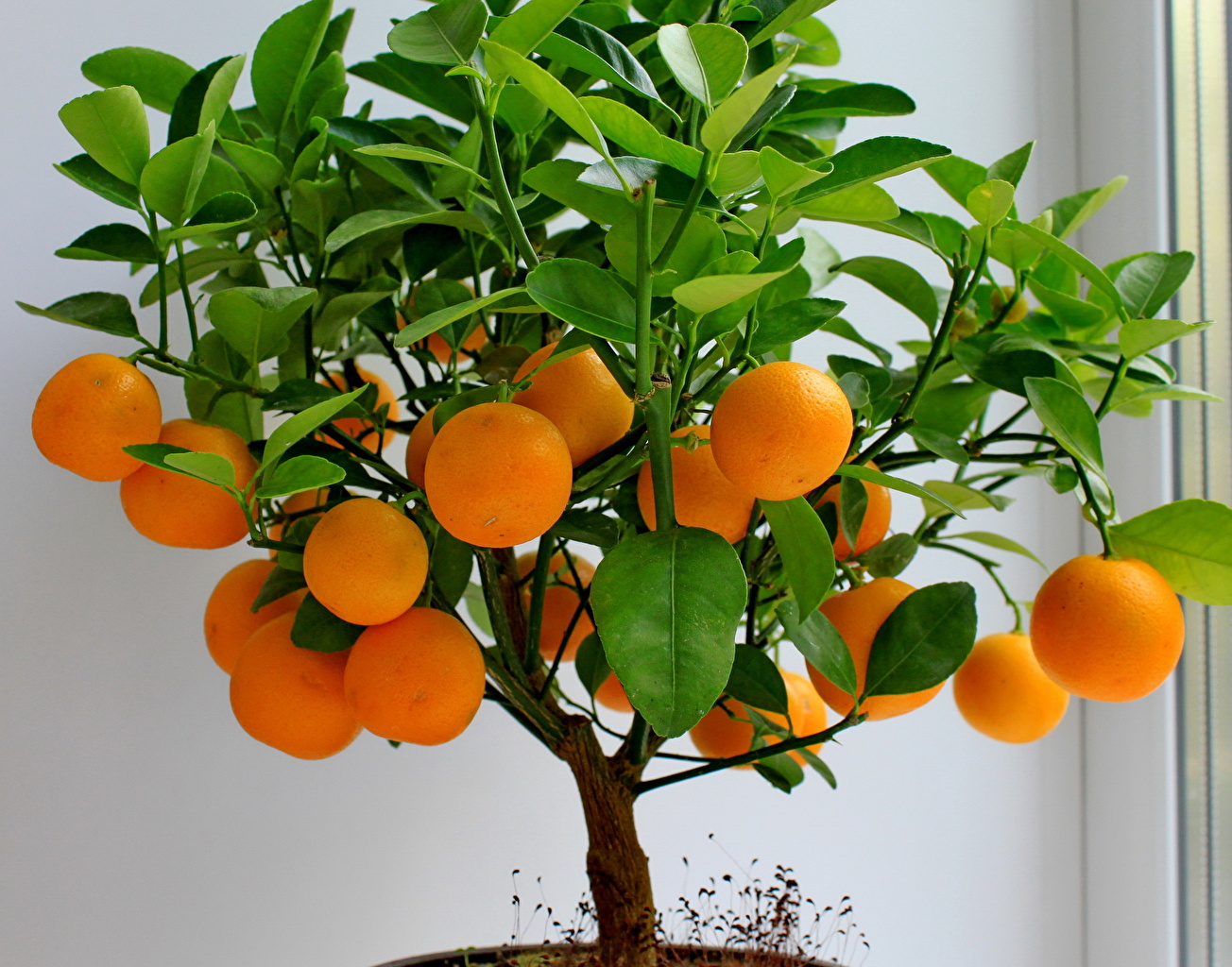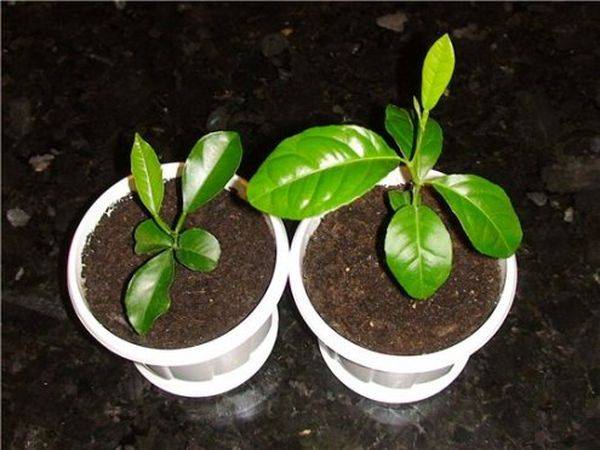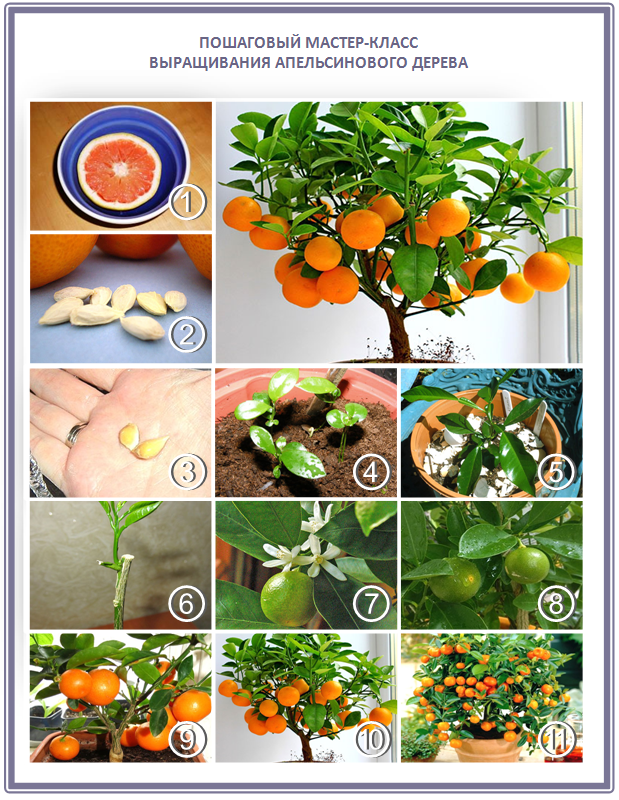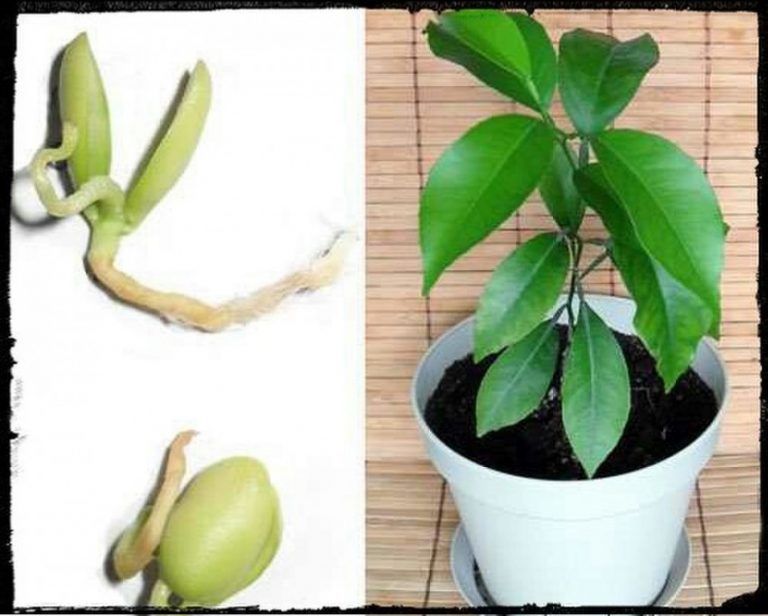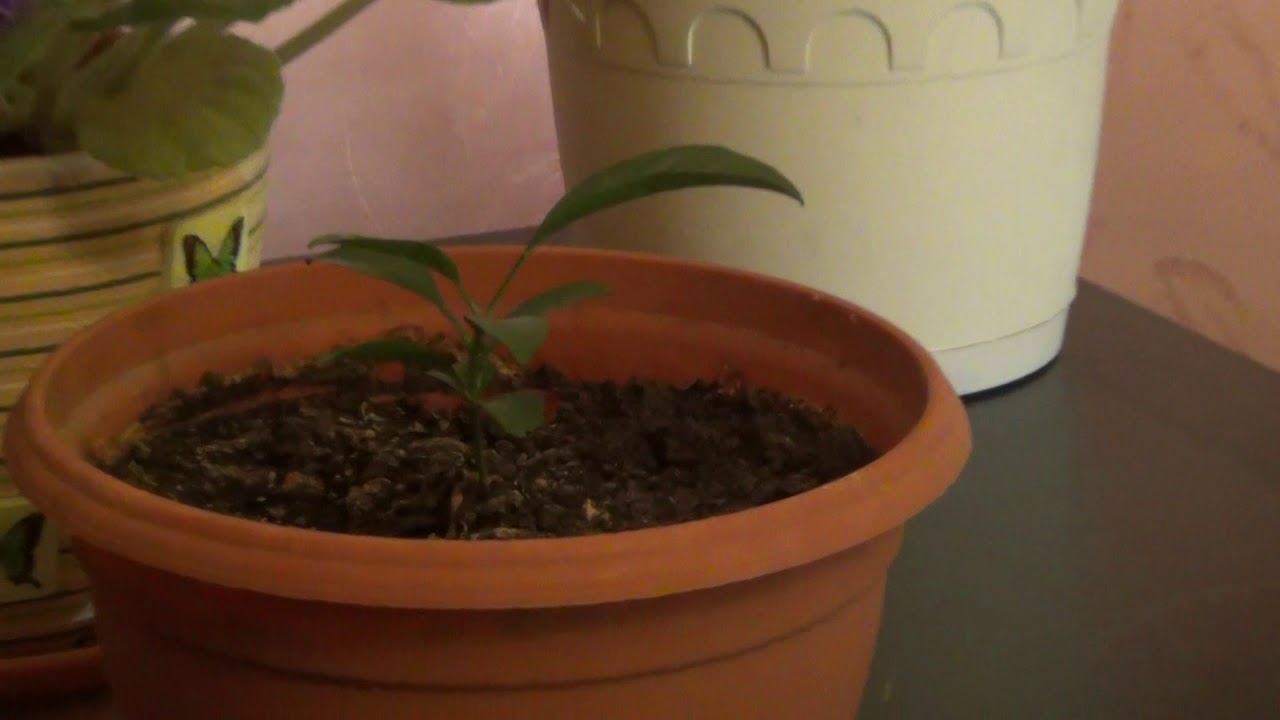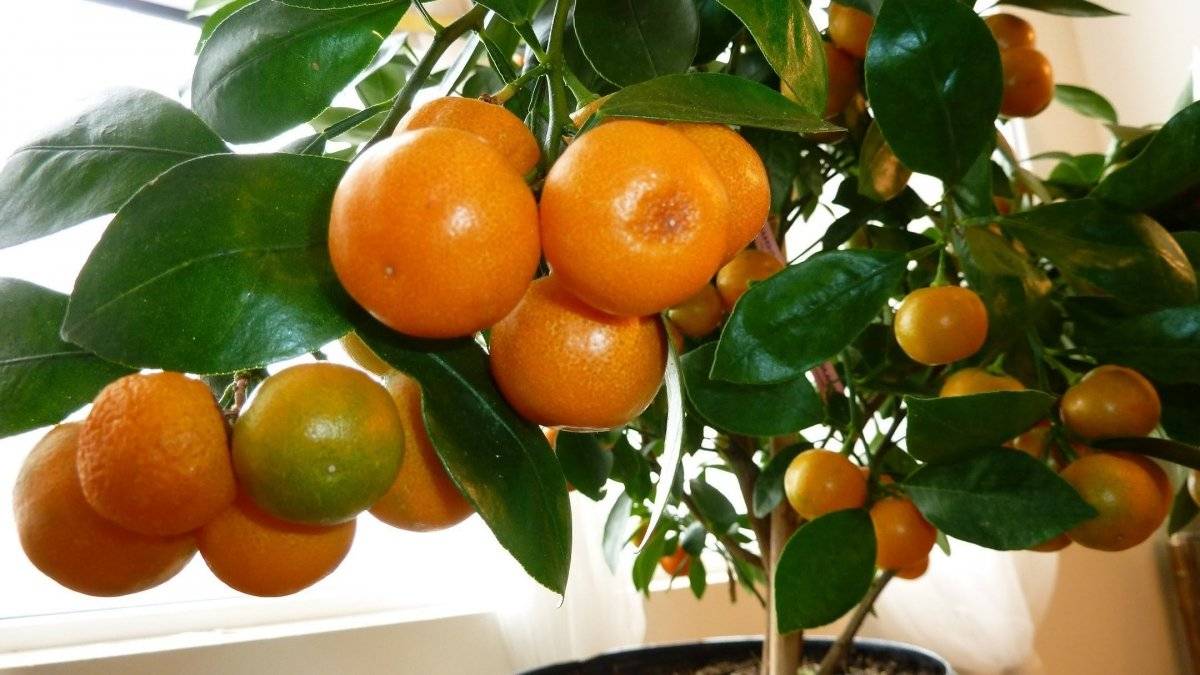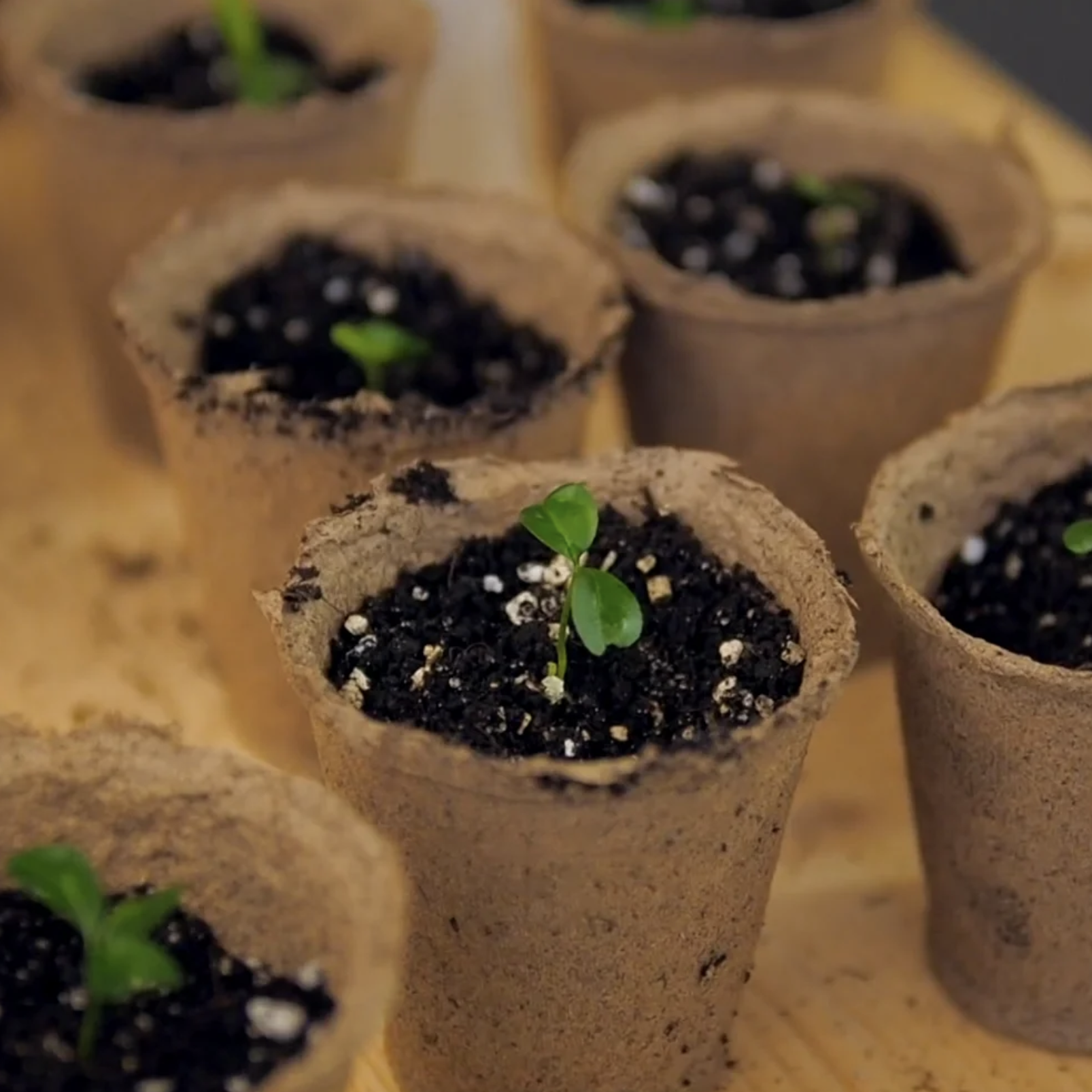Problems when growing tangerine
Yellowing and falling foliage
This problem can have different causes.
It is important not to rush, to carefully analyze the condition of the plant and make the correct diagnosis. In adult tangerines, the leaves may turn yellow and fall off due to their old age.
But at the same time, the tree itself looks healthy and develops normally.
General lightening of foliage may indicate insufficient lighting of plants. In this case, you need to take care to rearrange the tangerine closer to the light, or arrange artificial lighting for it.
The shedding of mandarin leaves can begin due to too dry air (in the absence of regular spraying, especially during the heating season), improper transplantation (when the root collar is deepened, choosing too large a pot volume), drafts. If one of these reasons is found, they simply need to be eliminated.
Drying and falling off of the lower leaves of a mandarin, despite the fact that the leaf begins to dry from the tip, is associated with regular waterlogging of the soil. This phenomenon occurs either as a result of over-grooming or due to too large a pot in relation to the seedling. In any case, the plant must be transplanted into an appropriate pot with fresh, loose (breathable) soil, after removing the rotten roots.
If the yellowing began from the bottom of the crown and spreads to the top, this indicates a lack of nitrogen. In this case, the tangerine must be fed with nitrogen fertilizers.
The light yellow color of young tangerine leaves, which gradually passes over to old leaves, indicates chlorosis (lack of iron). Treatment with iron chelate will help here.
Mandarin leaves fall off for no apparent reason - perhaps the plant lacks potassium. In this case, it must be fed with potassium nitrate.
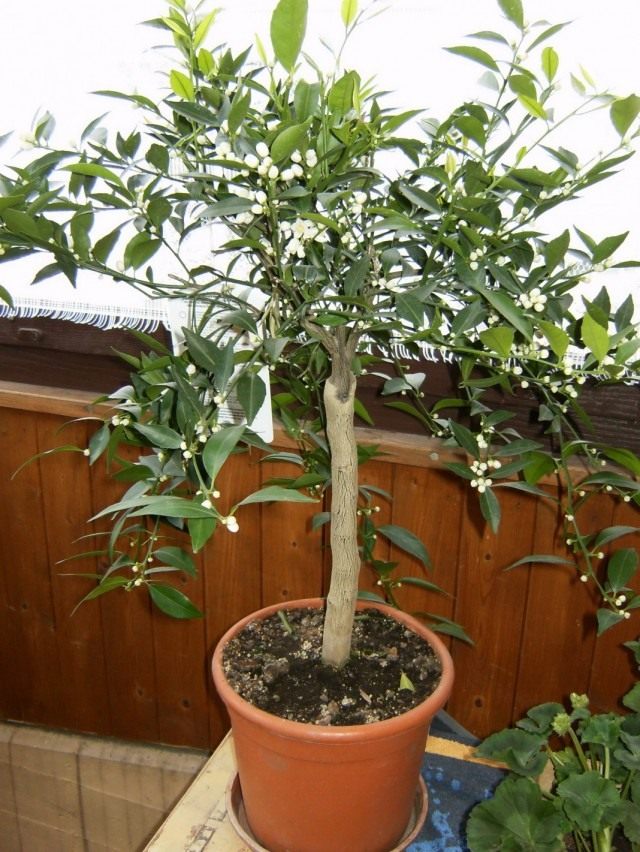 Blooming tangerine tree. Chris.urs-o
Blooming tangerine tree. Chris.urs-o
What are the requirements for growing an orange at home
Having an orange at home is the dream of many housewives. Observing the requirements for caring for the plant, it will not be difficult to grow a wonderful orange tree at home. Of course, when growing it, certain rules must be carefully followed. But as a result, a gorgeous exotic homemade orange will delight you and your family for many years.

Growing an orange crop at home will not be difficult if you follow all the rules.
Orange, like all citrus fruits, is a very healthy plant. The use of its fruits increases immunity, enriches the body with vitamins. At home, an orange tree, unlike a lemon, is unlikely to produce large and tasty fruits, as when grown outdoors. But the air purified by him from harmful substances will be very useful.
With proper care, an orange tree can be grown up to 1.5 m tall. The indoor orange is an evergreen tree with a spreading crown. During the flowering period, small white flowers carry a pleasant subtle delicate aroma in the house. Those wishing to grow this plant should know that it is quite capricious and requires personal care.
Growing an orange tree
Preparing seeds for planting
Fresh seeds are ideal for planting. You should not take planting material from dented, rotten, greenish fruits. Ripe, regular, beautiful oranges are ideal. What seed you plant, such a tree will grow.

Seed preparation:
- Choose large seeds, healthy and attractive looking, weighty.
- Use a fresh seed. A crust appears on the old ones, and the chances of climbing are reduced.
- Peel the pits from the remnants of the fruit pulp.
- Rinse, preferably under running clean water.
- Dip the seed in water for a day. Special fertilizers can be added to the water to increase the likelihood of germination.
Orange grows well without the addition of chemicals and fertilizers, so you can immediately plant it or put it in plain water. For the experiment, plant seeds from different fruits.
Soil preparation and planting
For planting, you should choose small containers. For example, for each seed there is an individual plastic disposable cup, or a large box for all seeds at once. If you do not plan to leave a lot of trees, do not plant a lot of seeds, as almost all will sprout, and it will be a pity to throw it out later.
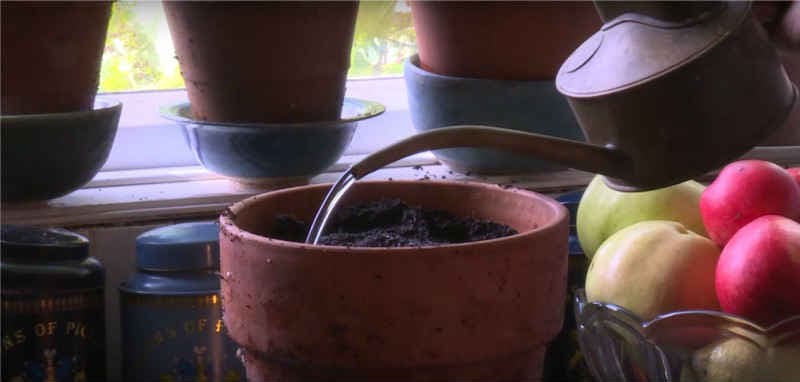
Buy land for planting in the store, there are special mixtures for citrus plants. Or cook it yourself by mixing peat and soil from the garden (1: 1). In such soil, the plant will be most comfortable, but it can grow in ordinary soil.
Planting stages:
- Take a pot with a lot of holes at the bottom.
- Place drainage (stones, styrofoam, sand) on the bottom of the pot.
- Pour soil into the pot, crushing it down a little.
- Make a hole 2 centimeters deep. If you are planting all the seeds in one box, the holes should be at least 5 centimeters apart.
- Place the seed in the hole and cover it with earth.
- Water the plantings.
- Our seed must be placed in a warm place, it may be poorly lit.
- We create a greenhouse effect. Cover the seedling with the neck from a plastic bottle, and leave the lid open for ventilation. It is also permissible to use a regular film or bag.
- After about a month, when the first leaves appear, it is better to move the plant to the sun. If you planted it in the winter, you may need some extra lighting. That is why it is better to land in March-April.
Transplanting a tree
As soon as 4-5 leaves appear on the sprout, it should be transplanted. The pot for the first transplant should be small (10cm). After all, a young plant has practically no roots, so there is too much moisture in the ground, it begins to sour in a large pot.

For the first transplant, we will make a different soil:
- 2 pieces of land from the garden;
- 1 part sand;
- 1 part peat;
- 1 part leaf humus.
In the future, the transplant is carried out once in a couple of years, and the next pot is only 2-3 centimeters larger than the previous one. If the plant is very old (10 years old), it is not worth replanting, it is better to change the topsoil.
Make sure you have ample drainage every time you transplant. The ideal transplanting time is early spring, before flowering and new leaves.
Planting and rooting the cuttings
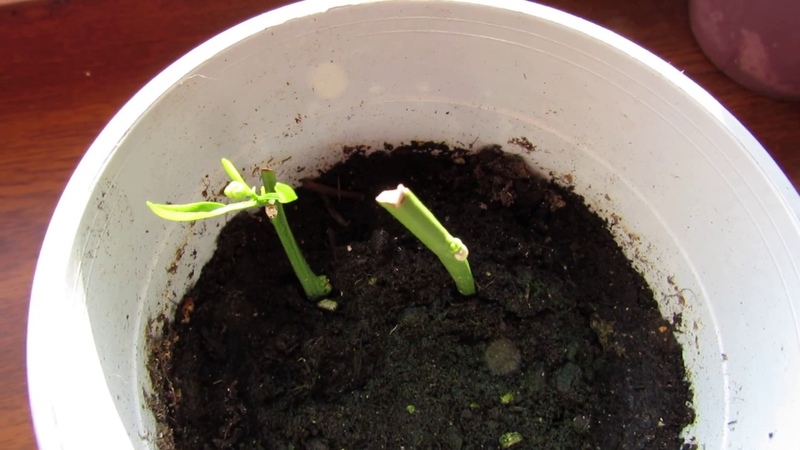
Growing lime from cuttings is much easier than growing from seeds. In this case, the tree will begin to bear fruit as early as the third year after planting.
Buy lime cuttings in a specialty store. This allows you to select the desired variety. Also, planting material can be asked from friends who grow this tree.
Specialty stores sell shoots ready for planting. To make planting material on your own, choose a young branch at the top of the tree and cut it off at an angle of 45 ° with a pruner or a construction knife. The resulting stalk should be 10-15 cm long and 5 healthy vegetative buds.
Before planting, the greens on the handle are cut off, leaving 2-3 of the largest leaves. If the stalk is not planted immediately after separation from the mother bush, the cut is preliminarily updated at the same angle.
The stalk is placed as a cut point in the Kornevin solution for 10-12 hours. This stimulates the germination of roots.
For rooting the cuttings, the soil mixture used for germinating seeds is suitable. However, sometimes they take ordinary disinfected sand.
The shoot is planted in moist soil so that it does not collapse without support. It is convenient to use the cut bottom of the bottle as a container for sprouting roots.The top of the bottle is placed over the seedling to create a greenhouse environment.
For germination, lime requires a temperature of + 25 ... + 26 ° C and high humidity. The top of the bottle is removed for 30-60 minutes. for airing every day. Every day, the sand is moistened, and the plant is sprayed with warm, settled water.
The cutting will take root in about a month. After this, the airing time is increased, gradually accustoming the plant to indoor conditions. Then the top of the bottle is removed.
2 months after planting, the seedling is transplanted into a pot with a diameter of 6-8 cm. The container is filled with drainage and universal soil mixed with sand. A rooted petiole is immersed in it so that it is covered with soil 1 cm above the level of the upper roots. After that, the soil is watered.
Seed selection
For planting, you can use any bone from a freshly eaten fruit, and if you wish, you can buy seeds of a particular variety. Choose whole, undamaged and the most attractive seeds. If you decide to use them from freshly eaten fruit, then they should be carefully washed, taking care not to damage the shell.
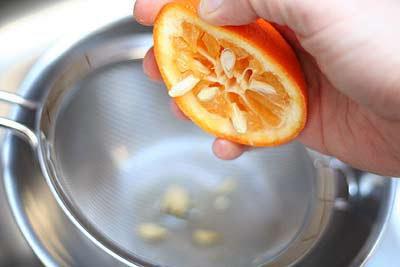
After that, they are soaked in warm water overnight. Then the bones are laid out on a damp napkin and covered with it on top. This will keep the moisture needed for germination. Drying out will negatively affect the germination of the plant. Then place the seed napkin in the bag, creating a greenhouse effect for the seeds. Orange is a thermophilic plant, so keep the seed bag in a warm room.
Crown formation
When the grown tree reaches a height of half a meter, it is necessary to pinch off a few leaves at the top. This will start the hatching of the lateral processes. When they grow back a little, they are also shortened in this way for the development of the offshoots. After a few years, young shoots should form on the tree. The first flowers will appear on them in the future.
The orange will begin to bear fruit in about 8 years. To speed up the process, the tree is grafted with a shoot from an adult fruiting citrus. Tie up several young twigs with soft wire or peel off the bark with a ring around one of them. So the seedling will bloom in 4 years.
It is easy to grow a beautiful and strong orange at home. Not every grower can achieve its fruiting. And the taste of these fruits is far from ideal. But even a novice lover of home flora can grow a decorative orange tree and admire its marvelous flowering.
Breeding methods:
Watering a room orange should be done very carefully, do not overflow.
Cuttings An important advantage of the method is the preservation of varietal characteristics. For cutting, use barked branches of this year and last year.
Using a sharp knife, cut off a stalk 8-10 cm long with 5 leaves just below the bud at the bottom and 5 mm above the bud at the top. Remove the leaf from the lower bud. Plant the finished cuttings in a mini-greenhouse in sandy soil. Place the greenhouse in a lighted area without direct sunlight and keep the soil slightly moist. After about a month, the rooted cuttings can be transplanted into an individual pot
Do this carefully so as not to damage the delicate roots.
Planting seeds. Even a novice gardener can use this method.
Plants grown from seeds are less demanding to care, grow quickly, but begin to bear fruit only at 8-15 years of age. Be aware that such a tree may not borrow the varietal characteristics of the parent. Use seeds for planting from a room orange. Storefruit seeds are not suitable for indoor growing. The seeds must be fresh, that is, they must have just been taken out. They need to be planted in a mixture of humus and sand to a depth of 1 cm. Cover the container with foil and place in a dark place. With moderate watering, the first shoots will appear in about a month.
When the first two leaves grow, transplant the sprout into a pot.
Graft. It allows you to get a faster harvest, so the scion should be taken from a fruiting tree. The disadvantage of this method is that it can be used only during the period of active sap flow. Use a knife as sharp as a blade to cut the stem. You can graft on a lemon or orange tree 2-3 years old. Cut off its crown at a height of 10 cm from the ground. Split the trunk into two halves and insert the slanting stalk. Choose a graft with 3 buds. Align the two branches and wrap the grafting site with plastic wrap. To preserve moisture, cover the plant with foil and place in a bright place. After about 3 weeks, it will be clear whether the stalk has taken root or not. If it didn't turn black, then everything worked out.
Many housewives are faced with yellowing of the foliage. Sometimes an orange can completely shed its crown. Watch the tree. You may have overdone it with watering or fertilizing. Either your orange lacks light or is standing in a draft.
Share a useful article:
Sprout transplant
The first shoots should appear in 3-5 weeks. As soon as the sprouts reach 1-2 cm, transplant them into the ground in pots with a diameter of 7-9 cm. To do this, pour a little expanded clay on the bottom of the pot, and on top - the required amount of ready-made soil for citrus plants. You can make this mixture from leafy soil, coarse river sand, humus and sod land in a ratio of 1: 1: 1: 3 parts. Don't use pure peat. It is advisable to place the pots closer to the light (but not in direct sunlight).
When transplanting, do not bury the sprouts too deeply. The optimum depth is 1.5 cm. Be careful with the roots - the plants are still very fragile. Therefore, cover the sprouts on one side with damp earth. This is necessary so that the stems do not dry out and break.
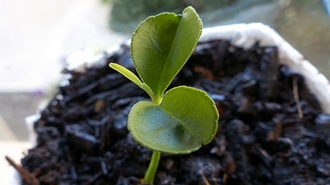 |
 |
|
Orange sprout |
Growing an orange from seeds |
Young plants must be constantly watered and sprayed with clean, settled water at room temperature. The larger the tree becomes, the more water it will need.
After the formation of the first 4-6 leaves, transplant the seedlings into larger pots with a diameter of already 9-11 cm. Use the transfer method. Save the old large earthen ball and plant the sprout with it.
At this stage, ideal conditions for the seedlings should not be created - additional lighting with lamps, mandatory spraying, maintaining the ideal temperature, etc. They are hardened and natural selection. Leave the strongest shoots. They will be the ideal tenants for your apartment.
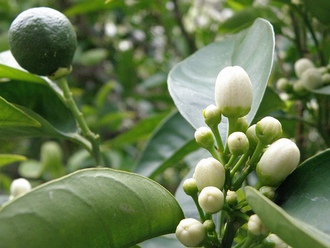 |
 |
|
Buds on an orange tree |
Orange blossom |
Growing an orange tree from seed
Hello dear friends!
Flower stalls sell lemon, tangerine and orange trees. Their beautiful and tasty fruits will catch the eye of any buyer. Many growers are afraid to start a citrus plant in their home, thinking that they will not be able to cope with it. But it’s not that difficult.
Since the cost in domestic stores for citrus trees is quite high, for example, observing a certain technology, you can try to grow an orange tree from a seed in an apartment.
Materials and tools required for work
- juicy orange;
- a piece of gauze;
- a glass of sour cream or yogurt;
- soil;
- warm water;
- plastic bag.
Stages of growing an orange tree from seed
Citrus trees require a lot of light and should be grown in a bright room. The plant needs your love and care. So let's get started.
1. After you have eaten the orange, select the largest seeds and set them aside. Soft and flat can be thrown away.
2. Selected seeds must be immediately placed in a humid environment so that they quickly root. The bones should be wrapped in a piece of cloth or gauze, moistened with water and put on a saucer.To provide the bones with warmth and moisture, the saucer must be placed in a transparent plastic bag.
3. A greenhouse with orange seeds is best placed in a warm place with good lighting. The dampness of the cloth should be checked three times a week. Do not allow the fabric to dry out. You can wait for the first roots in 4-6 weeks. The speed of their appearance depends on your proper care.
4. When you see the spine, you should not plant the bone directly into the ground. It is necessary to wait until the root reaches a length of 1-2 cm. A layer of drainage should be laid on the bottom of the disinfected pot, and then the prepared soil. Make a 1.5 cm depression in the ground and plant an orange seed in it. When the seed is buried in the ground, the root cannot be damaged.
5. A small sprout needs constant spraying. You should put the pot with the plant in the brightest place, but not under the direct rays of the sun.
6. When the first pair of leaves appears, the orange tree can be transplanted into a pot in which it will continue to grow. When you see that the grown plant does not have enough space, then it must be transplanted into a deeper pot.
7. Caring for an orange tree is watering, regular spraying. Do not forget that the tree loves to bathe in the sun, so it needs sunbathing.
8. Formation of the crown. When the tree grows up, you need to pinch the top. Thus, the plant will produce additional shoots and will soon become a lush bush.
As you can see grow an orange tree from a seed at home is not difficult at all. If the plant is properly cared for, then the fruits on the orange tree will appear in the 5-6 year of the plant's life. See you, friends!
Growing conditions and care for homemade orange.
To grow an orange tree at home, soil that has a good supply of nutrients should be used. For these purposes, a flower mixture is suitable, which can be purchased in stores, or the soil from your summer cottage treated with boiling water and enriched with humus. Be sure to lay out expanded clay or charcoal drainage at the bottom of the dishes. When watering, do not allow stagnation of water and rotting of the soil. In this case, you need to ensure that the entire earthen lump is moistened, otherwise the tree will begin to lose roots and hurt. Watering is required approximately twice a week. The soil must be allowed to completely saturate with moisture, and then it must dry out. When the soil becomes acidic, it must be replaced. The recommended container for growing an orange is a clay pot. It is quite moisture permeable and this property helps to regulate soil moisture, clay absorbs and evaporates excess water through the outer surface.
Orange loves light, so a grown tree needs direct sunlight but no more than 2 hours a day. The orange at home does not like rearrangement in a new place, so you need to find a permanent place for your home tree in the southern bright room from the very beginning. To form a beautiful crown, you can turn the orange pot, but every day at a small angle so that the plant has time to turn around. Each year, as it grows in size, the homemade orange needs to be transplanted into a larger pot. New dishes should be slightly larger than the previous ones by 3-4 cm in diameter. When transplanting, an earthen lump with roots must be removed with minimal damage and moved to a larger pot, and the difference must be filled with fresh soil. A pot of 8-10 liters in volume can be left as a permanent one, and the transplants can be replaced with top dressing, while the topsoil must be renewed at least twice a year.
Comfortable temperature for growing an orange: 17-28 degrees. Orange, like any houseplants, does not tolerate drafts. A homemade orange needs to be sprayed with water several times a week to maintain optimum moisture.During the heating season, daily spraying is required.
To give an aesthetic appearance to an orange at home, it is necessary to take an active part in the formation of the crown. In the first year of life, the tree releases a single shoot up to 30 cm high.In the second year, before the start of active growth - in the spring, you need to cut off the top of the shoot with pruning shears or scissors, leaving only about 20 cm.This will force the tree to release lateral buds. Next, remove the lower buds, leaving only the 3 upper ones. They should form the skeletal main branches of the crown of a homemade orange. The next year, do similar manipulations with the second-order side branches, stimulating branching. Often, cutting off the central orange shoot does not give the desired result, the tree releases a single new sprout from above, then you need to cut the shoot again together with the upper bud, and if the length allows, then with the second one. An orange tree takes on a pretty look when the branches develop up to level 5-6. In the future, it will be enough to cut off individual fast growing shoots, or remove them altogether.
With careful care, a home-grown orange will bloom in a few years. To form ovaries, move the pollen from the anther to the sticky stamen with a cotton swab. If a lot of fruits are formed, then some will need to be removed, otherwise the tree may die from exhaustion. For normal growth, one fruit should be matched to 10-15 leaves. Try growing your homemade decorative Pink Banana from seeds and make it fruitful.
Tell your friends about it:
What else to read on the site:
Where do oranges grow? Growing an avocado at homeHow to grow a banana at homeLightening hair with lemon
All reviews, questions and comments should be sent to us through:
Feedback form
Popular articles:
How to form a crown?
This thermophilic plant needs crown formation. This work should be started from the moment the tree grows to thirty centimeters. You need to cut two to four leaves from the top of the plant. This will give a powerful push, and it will release side branches, which are second-order branches.
Subsequent pruning of these branches stimulates the growth of shoots of the third and subsequent generations. The branches are cut when they reach a length of thirty centimeters. This is how all shoots are shortened. As a result, the trunk of the formed plant is fifteen centimeters, and the crown is three or four branches, which are covered with small shoots.
The purpose of the grower is the twigs of the fifth order, since they are the ones that bear fruit. But this usually happens at 5-7 years. This largely depends on the characteristics of the variety and the conditions of detention.
What fertilizers are needed for citrus trees
For citrus indoor plants in the summer, you need a special set of fertilizers. Nutrition is carried out by alternating organics and minerals. Some fertilizers can be made with your own hands from coffee grounds, tea or sugar infusions. If the house has an aquarium, water from it is the best watering agent, since it contains vermicompost.
Important! Organic and mineral fertilizers cannot be used together. It can burn the roots

Organic
The best organic remedy is horse manure infusion. Proportion: 100 g per liter of liquid. Infused for about 2 weeks. Instead of horse manure, you can use cow dung or chicken dung (40 g per 1 liter).
Mineral
Urea contains a large amount of nitrogen. It dissolves at the rate of 1.5 g per liter of liquid. Nitrogenous fertilizing is excluded for the period of flowering, the formation of ovaries, otherwise they will fall off. At this time, phosphorus and potash fertilizers are needed. Fertilization with nitrogenous compounds is resumed when the size of the fruits reaches a diameter of 15 mm.
Magnesium is necessary for the plant, since its deficiency causes chlorosis: loss of color of the leaf plate, and sometimes necrosis: the death of its individual sections.

Care of a young seedling
Immediately after transplanting a young plant, it should be watered and sprayed with a weak solution of potassium permanganate and placed on the windowsill so that the leaves of the plant are directed towards the sun. But the direct scorching rays of the sun should be avoided during the hot season. Diffused light is more suitable for lemon, but you should not constantly twist and rearrange the tree - this may even lead to the death of the plant.
Watering should be approached responsibly. You need to touch the soil in a pot with your hands, if it crumbles and does not stick to your fingers, then you need to water it, and if the earth sticks and is taken in lumps, then it is better to wait with watering.
Water for watering a lemon tree, like any other indoor plant, must be settled. Lemon should be watered with warm water. If necessary, it can be heated to a temperature of 30-32 degrees.
The watering process itself also has its own nuances: you need to tilt the vessel as low as possible in order not to erode the upper layers and not expose the roots; it is better to water along the contour of the pot so that the lemon is in an evenly moist soil. There should be small holes at the bottom of the pot so that excess water flows into a special tray, from where it should be drained. In addition to watering the soil, general spraying of the trunk and leaves is beneficial for the lemon.
The lemon tree needs to be repotted periodically. The specificity of this plant is that its roots are tangled, so over time it is necessary to change the pot to a larger size. But during transplantation, in no case should the root system be damaged.
With such care and a responsible approach, the lemon tree will delight with stable growth. But in order to receive the cherished fruits, it is necessary to graft the plant.
Growing lime from seed at home
Growing lime from seed is a longer and more complex process than planting a cuttings. This method allows you to get strong and hardy plants that will bear fruit longer.
You can plant lime seeds in an apartment all year round. In winter and autumn, you will need a phytolamp, which is turned on for 5-6 hours. If you plant a seed in the second half of February, you will not have to highlight the lime additionally. Therefore, it is recommended to start growing the plant in late winter or early spring.
Selection and preparation of seeds
Each lime contains about 4 seeds. If you decide to buy fruits in a store, you will have to take several pieces to collect enough planting material.
Fruits must be firm, regular in shape, free of spots, damage, rot, mold and other signs of disease.
The collected bones are prepared:
- Washed from the pulp and sorted out. Select dense, light (white or cream) bones without dark spots and damage. Soft and empty seeds are thrown away.
- Disinfect - soak for 30 minutes. in a light pink solution of potassium permanganate or hydrogen peroxide.
- To stimulate germination, to make the seedlings stronger and more hardy, the seeds are soaked for 30-60 minutes. in humic fertilizers.
The treated seeds are allowed to dry out, after which they are planted in the prepared soil.
Pot and soil
In order for the seeds to germinate quickly and the seedlings to feel comfortable, it is important to use the correct soil for planting. Lime loves fertile, loose soil
In heavy soil, the plant begins to ache and rot.
The easiest option is to buy a universal soil mixture at a gardening store, mixing it in a 2: 1 ratio with river sand. Prepare the soil and independently. To do this, take:
- garden land - 1 part;
- humus - 1 part;
- sand - 1 part.
A glass of ash is added to the bucket of the mixture - it normalizes acidity and acts as an additional fertilizer.
The soil is disinfected in one of the following ways:
- pour boiling water over;
- poured with hot copper sulfate;
- watered with a dark pink solution of potassium permanganate;
- calcined in the oven.
Drainage must be used: shell rock, broken ceramics, crushed expanded clay, fine gravel.
It is recommended to sow more seeds than needed. Not all planting material will germinate. Seeds are sown in one common container, such as a wooden box or plastic tray.
For the first pick, use containers with a diameter of up to 6 cm. It is desirable that these are special flower pots. For each next transplant, take a container 3-5 cm larger than the previous one.
The containers are also disinfected by soaking them in a dark pink solution of potassium permanganate for half an hour or pouring them over with boiling water.
Planting and care during germination

Step-by-step instructions on how to grow lime from a seed at home:
- A 1 cm thick drainage layer is poured at the bottom of the box, the rest of the volume is filled with soil.
- The soil is moistened with warm water from a spray bottle.
- The bones are buried in the ground by 1.5-2 cm, a distance of at least 5 cm should remain between them.
- After planting, the soil is watered, the boxes are covered with foil and removed to a warm place.
The seeds germinate from 3 weeks to 2 months. Until this moment, the crops should be under the film. The soil is moistened as it dries from a spray bottle with warm water. Every day, the film is slightly opened for 30-60 minutes. for airing.
After seed germination, the duration of airing is increased; after a week, the film is completely removed.
Seedlings are placed on a windowsill. The east or west side of the apartment is best suited. If you put lime near the south window, the immature plants will have to be shaded during the day. On the north side, the seedlings will not have enough natural light.
Water the sprouts from a spray bottle with warm settled water as the soil dries out. They moisten not only the soil, but also the plants themselves.
It is important to protect seedlings from drafts. Otherwise, they will get sick with a black leg or die.
The ideal temperature during this period is + 25 ... + 26 ° С. The minimum temperature is + 12 ° C.
When 2-3 true leaves appear on the seedlings, they are transplanted into individual pots. The strongest specimens are chosen for further cultivation. They are distinguished by an elastic thick stem, bright color of leaves, and short internodes.
A centimeter layer of drainage is poured onto the bottom of the lime transplant pot. The rest of the volume is filled with soil so that 1-2 cm remains to the edge of the pot.
The seedling is carefully removed from the common box using a wooden stick or spoon, taking care not to damage the roots. The plant is transplanted into a pot without deepening the root collar. After transplanting, the lime is watered with warm, settled water and allowed to take root for at least two days away from the sun.
Care
How it will turn out in the end depends on caring for a young tree: whether it will be healthy and whether it will bear fruit.
So that the seedling does not get sick and grows actively, it is necessary to observe the following growing conditions:
- good lighting (partial shade in summer, additional light in winter);
- monitoring the humidity of the room air (at least 40%) and soil (there should be no water in the pallet);
- it is necessary to control drafts, to avoid their impact on the plant.
A grown indoor orange tree is placed on the well-lit side of a house or apartment on a windowsill. In the summer months, it is sheltered from the rays of the sun. In winter, artificial additional lighting is connected.
In cold weather, under the influence of heating devices, the orange house tree dries up and needs frequent spraying with water from a spray bottle. Dry air kills the plant, it will begin to shed foliage and may die from lack of moisture. It must be remembered that citrus is an inhabitant of the tropics, and a humid climate is its element.
It is required to take out a home decorative orange to an open balcony or veranda in the warm season, so that the plant is in the fresh air.
If there is no liquid left in the flower tray in summer, the bush is watered daily. The water must be defended, the orange does not tolerate poisonous chlorine, which is contained in large quantities in tap liquid. Before watering, it is heated to +25 ° C. Home plant care is based on proper soil moisture.
How to grow properly at home?
At home, a citrus plant can be grown in two ways: from a stone or a cuttings. Each of the methods has its positive and negative sides.
From the bone
Citrus plants grown from seed, more resistant to environmental influences, strong. There is only one explanation - from a very early age they get used to the environment. But with flowering they are problematic. Seed trees bloom at the 8-12th year of life, and the fruits are not always pleasing with taste. For an earlier flowering, the plant must be grafted. A stalk of an adult tree is needed for the stock.
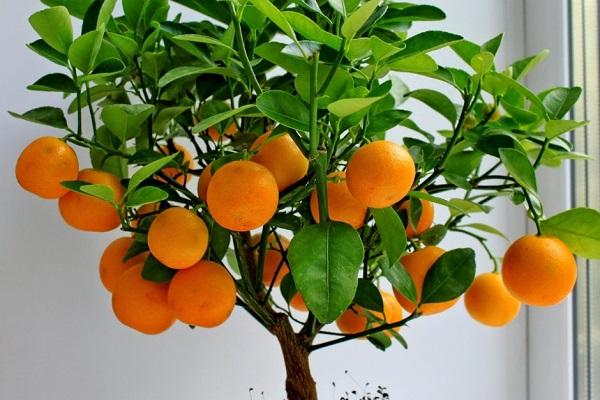
To obtain a tree in this way, you must:
- Choose planting material: the fruit must be ripe, undamaged, of high quality.
- Wash the bone from the pulp, soak in water for a day.
- Place in prepared soil to a depth of 2 cm.
- Use citrus mix for planting.
- Young plants do not tolerate transplanting well; a transshipment method is used for them. We recommend using a container of about 2 liters with good drainage.
- Cover the ground with a film, place the container in warm and dark.
The germination time ranges from 2 weeks to 2 months. There can be several sprouts from one seed. You need to leave the strongest, cut the rest to the level of the soil.
By cuttings
Cuttings taken from a fruiting tree root well.

This requires:
- Prepare a container with sand (coarse). Rinse it thoroughly to remove impurities. Can be used with a portion of light leaf humus. Put a layer of expanded clay on the bottom of the container for drainage.
- To create greenhouse conditions, cut a transparent plastic bottle.
- Cut cuttings from 1-2-year-old branches, up to 12 cm long, should have up to 5 leaves.
- The lower cut is made under the kidney, the upper one - at a distance of 0.5 cm from the last kidney.
- Soak the prepared cuttings in a root growth stimulator.
- Powder the cut of the cutting with charcoal in order to prevent the decay process.
- Place in prepared sand. Sprinkle the sand and the stalk with a spray bottle. Irrigation should be carried out twice a day.
- The optimum temperature is 20-25 ° C. Cover the stalk with a cut plastic bottle.
After 2-3 weeks, white roots will appear on the lower cut. They are quite fragile, so replanting is necessary only after 1.5 months. Before transplanting, the plant is gradually accustomed to the environment by opening a plastic bottle. Dwell time without bottle is gradually increased.
From the origins or start from a clean pot
Of course, today you can buy an already grown lemon tree or even an adult plant with flowers and fruits. But, firstly, it is much more pleasant to grow it yourself, and secondly, it should be borne in mind that a large tree is already accustomed to certain conditions and has adapted to its environment and therefore there is a very high probability that in other conditions it will hurt, or maybe and stop bearing fruit altogether.
So, the origins of growing lemon trees are seeds. It is not necessary to search for them specifically, the best planting material is an ordinary seed of a purchased lemon. It should be taken from fresh, juicy lemon. The seed itself should also be fresh, moist and you need to remove it from the lemon just before planting so that it is still in the juice. You can plant several seeds, so there is more chance that the tree will sprout. Initially, the seeds can be planted in a plastic cup (but drainage holes need to be made), and when the sprouts sprout, they should be planted in a pot. Lemon generally loves transplants.
What kind of orange is grown in the house
Of the citrus fruits intended specifically for indoor cultivation, three are especially popular:
Pavlovsky orange. It is not high - a meter maximum. Quite fruitful, additional specimens can be obtained by ordinary cuttings
However, the fruits ripen for a long time, up to nine months, during which the tree requires increased attention and careful care.
Gamlin. It will be taller - it grows up to one and a half meters
Fruits are juicy, sweet-sour, few seeds. The harvest should be expected late in the fall.
Washington Navel. The most favorite orange tree among home gardeners. Can grow up to two meters; there is no adult plant below one. An additional bonus - it smells charming during flowering, the hair can bear fruit from the age of three. The fruits are quite large, up to a third of a kilogram.
It is advised not to buy a fruiting orange tree: when changing residence, it may refuse to bear fruit for a couple of years. Let it already agree to "feed" you when it takes root.
